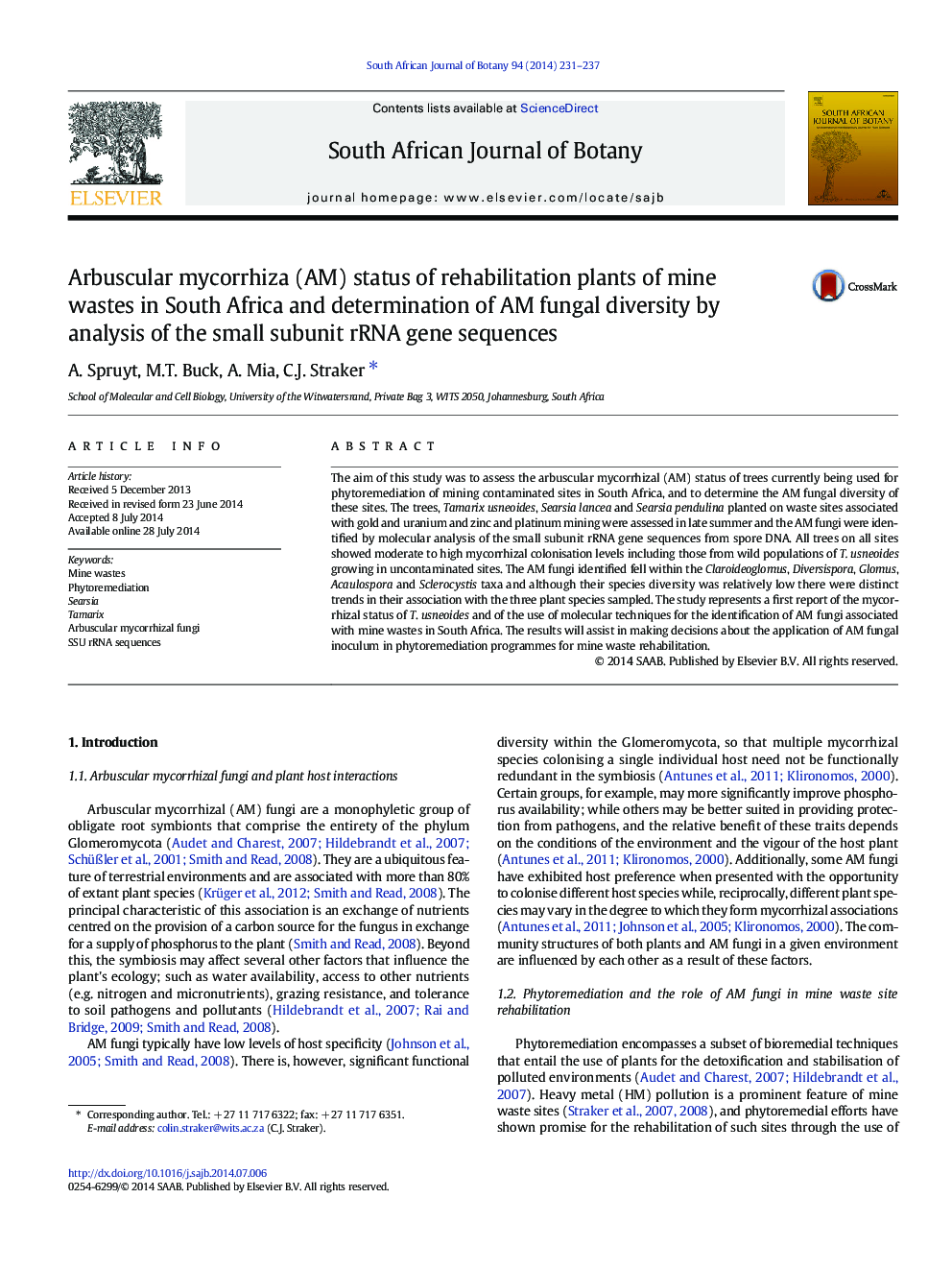| Article ID | Journal | Published Year | Pages | File Type |
|---|---|---|---|---|
| 4520681 | South African Journal of Botany | 2014 | 7 Pages |
•We studied the arbuscular mycorrhizal (AM) status of mine waste rehabilitation plants.•All three plant species had moderate to high total colonisation levels.•AM fungal community composition was determined by analysis of SSU rRNA gene sequences.•AM fungal species were from Claroideoglomus, Diversispora, Glomus, Acaulospora, Sclerocystis taxa.•Each plant species displayed a tendency to associate with specific groups of AM fungi.
The aim of this study was to assess the arbuscular mycorrhizal (AM) status of trees currently being used for phytoremediation of mining contaminated sites in South Africa, and to determine the AM fungal diversity of these sites. The trees, Tamarix usneoides, Searsia lancea and Searsia pendulina planted on waste sites associated with gold and uranium and zinc and platinum mining were assessed in late summer and the AM fungi were identified by molecular analysis of the small subunit rRNA gene sequences from spore DNA. All trees on all sites showed moderate to high mycorrhizal colonisation levels including those from wild populations of T. usneoides growing in uncontaminated sites. The AM fungi identified fell within the Claroideoglomus, Diversispora, Glomus, Acaulospora and Sclerocystis taxa and although their species diversity was relatively low there were distinct trends in their association with the three plant species sampled. The study represents a first report of the mycorrhizal status of T. usneoides and of the use of molecular techniques for the identification of AM fungi associated with mine wastes in South Africa. The results will assist in making decisions about the application of AM fungal inoculum in phytoremediation programmes for mine waste rehabilitation.
